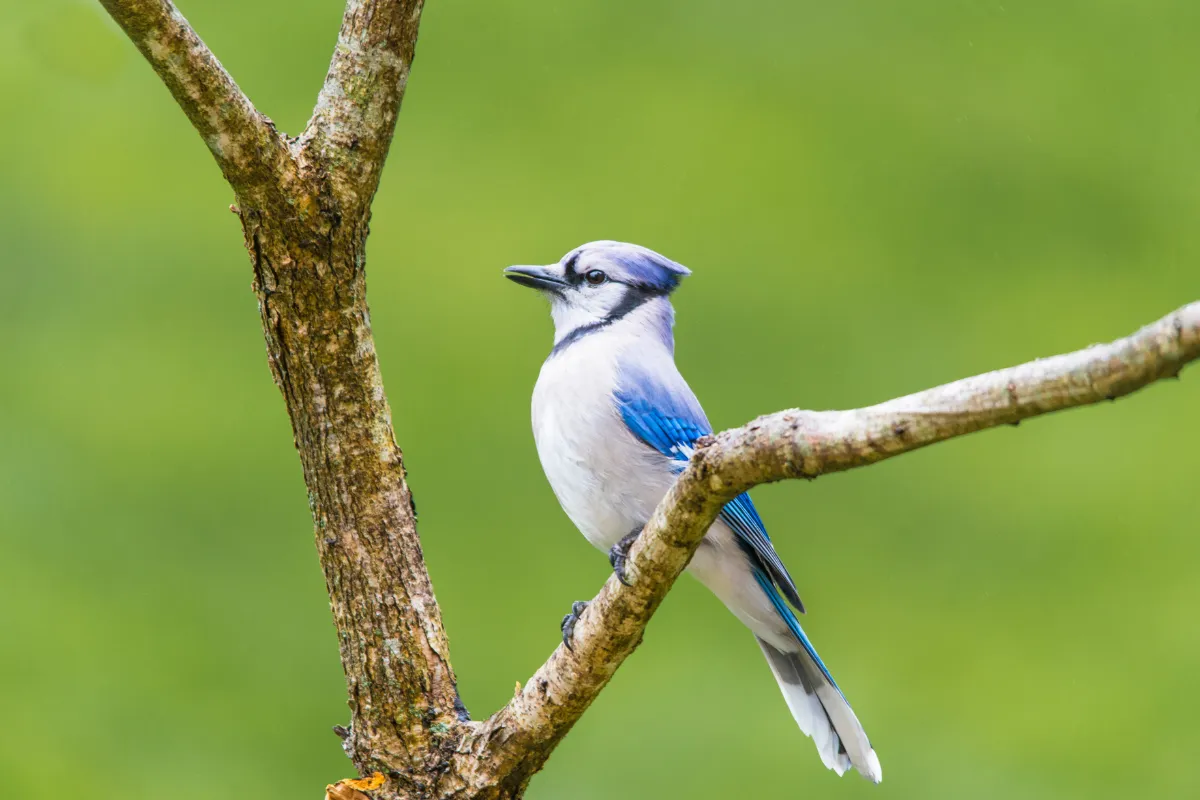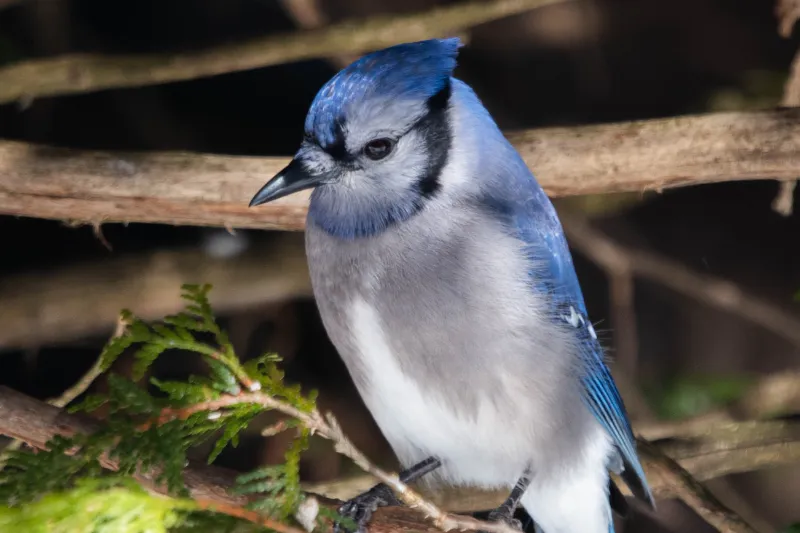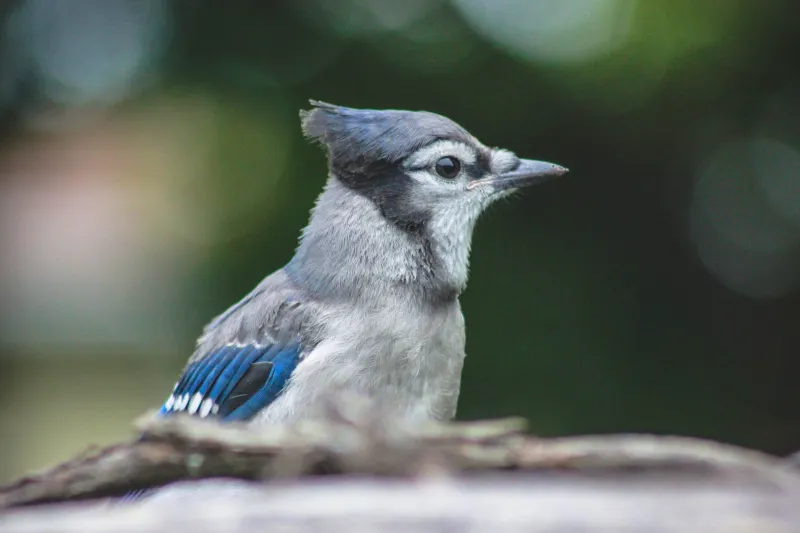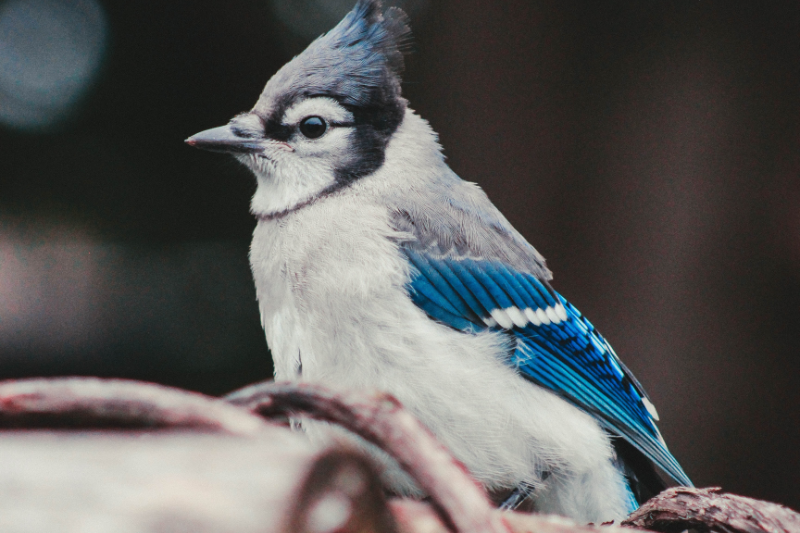Top 10 Interesting Facts About Blue Jays

Blue Jays belong to the Corvidae family. The scientific name of Blue Jay is Cyanocitta cristata. These types of birds are mainly found in native eastern North America.

Image Source: Photo by Robert Pointer: Pexels.com
Blue Jays are known as colorful birds. These birds have blue feathers and are passerine in nature. They are categorized into four different subspecies of Blue Jay. They are:
Northern Blue Jay: Cyanocitta cristata bromia
Coastal Blue Jay: Cyanocitta cristata cristata
Interior Blue Jay: Cyanocitta cristata cyanotephra
Florida Blue Jay: Cyanocitta cristata semplei
In this blog post, we will let you know the ten interesting facts about Blue Jays in detail. Please stick with us to discover the uncovered facts about them.
Top 10 Interesting Facts About Blue Jays
Fact 1- Blue Jays Are Sexual Monomorphism
Generally, blue jays size ranges from 9 to 12 inches in length and weighs around 70 to 100 grams. Their wingspan is between 34 to 43 cm.
Their plumage is lavender-blue to mid-blue in the crest, wings, back, and tail. Male and female birds are identical. They are also known as sexual monomorphism.
Fact 2- Blue Jays Loves Farms & Backyards
They live in wooden urban and suburban areas such as parks, farms, backyards, and forest edge habitats. Blue Jays are also found in the eastern and central United States, south to Florida and northeastern Texas.

Blue Jays occupy a wide range, from the pine woods of Florida to the spruce-fir forests of northern Ontario. Their range extends from north-Westwards to the north of US and southern Canadian Pacific Coast.
Fact 3- Predation and defense mechanisms
The birds are actively found to defend their nests against predators. Adult blue jays prey on cats, hawks, and owls. But, the baby blue jays are preyed on by raccoons, crows, squirrels, and snakes.
Fact 4- Blue Jays are omnivorous
This type of bird is omnivorous birds. Most food they eat is 75% of their vegetable matter and the remaining 25% of insects. These colorful birds have strong beaks for cracking seeds.
| Read More: Are Blue Jays Corvids? A Look at Their Physical and Behavioral Traits >>>
Blue Jays love to eat peanuts in the shell. Their primary diet consists of acorns, berries, grains, weed seeds, beech mast, insects, small invertebrates of various types, eggs, nestlings, and many more.
Fact 5- Blue Jays Nesting Habits
Talking about the blue jays nesting habits, they build their nest in the branches of deciduous or coniferous trees. They usually use grass, sticks, small twigs, leaves, bark, and roots to build the nests.
Both male and female blue jays participate together to build up their open cup-shaped nest. The female bird lays the eggs between two to seven, which are light brown or blueish.
Fact 6- Blue Jays Are Very Vocal
Blue Jays mostly communicate with other birds through vocalization and body language, using their crest. They make a variety of sounds to share.
Blue Jays are frequently known for their mimic hawks, especially the Red-shouldered Hawk. Most often, they are heard with a loud jeer. Also, chattering, rattling, screaming, clicking, and squawking.

The Blue Jays lower their crest when they are feeding nestlings, and incubating with mates and family. However, their crest becomes higher when they squawk.
Fact 7- Blue Jays are highly intelligent and have problem-solving ability
Like other Corvids, the beautiful songbirds, Blue Jays, are highly intelligent. They are also regarded as having problem-solving abilities.
You can also observe the colorful birds using the strips of newspaper as a tool to collect the food.
Fact 8- Blue Jays have an important role in spreading seeds
They have an essential role in spreading the seeds in the ground. Blue jays are considered a result of dispersing acorns. Some of the birds gather seeds, acorns, and nuts and bury them in the soil.
Fact 9- Blue Jays represents a Folklore and symbolism
Blue Jays is an old African American folklore of the southern United States. It is a significant metaphysical creature that has been credited with making the earth.
These birds are also considered noisy, arrogant, prideful, and selfish. They are also a symbol of independence and strength according to some reports.
| Read More: What Do Blue Jays Eat? A Complete Guide To Feed Blue Jays >>>
Christians also believe that Blue Jays are a sign from heaven and a sign of good luck. Blue Bird is also the provincial bird of Prince Edward Island in Canada.
Fact 10- Conservation status and threats
These types of species are not endangered. Blue Jays have experienced some decline throughout the northern part of its range. Every year it declines by 0.6%.
According to the North American Breeding Bird Survey, from 1966 to 2019, about 27% cumulatively declined.
FAQ About Blue Jays
What do blue jays eat?
Blue Jays eat peanuts, sunflower seeds, acorns, berries, insects, grains, fruits, suet, and many more.
Are blue jays aggressive?
Yes, blue jays are aggressive to other birds. These types of birds attack other birds to protect their nest and food. They also raid the nests, eggs, and chicks.
Where do blue jays live?
Blue Jays are native to eastern North America. They are primarily found in the eastern and central parts of the United States.
What is the lifespan of a blue jay?
The average lifespan of the estimated wild birds to survive till adulthood is 7 years. The oldest blue jay was found to be 26 years and 11 months old at the time of death.
How do blue jays communicate?
The blue-colored songbirds mainly communicate vocally and with body language using their crest.
Are blue jays beneficial to ecosystems?
These beautiful birds are beneficial for the ecosystem in order to disperse the seeds in the ground. They often gather seeds and nuts and burrow them into the soil.
Why are blue jays sometimes considered a nuisance?
The amazing bird is considered a nuisance because bluejays are highly territorial and generally aggressive in nature. They are also known as dive-bomb cats and dogs.
How can I attract blue jays to my yard?
Specific steps should be followed to attract the blue jays in your yard. They are
- Providing foods such as peanuts, acorns, sunflowers, seeds, etc.
- Planting trees and shrubs such as Birch, Eastern White Pine, Crabapple, Beech, Oak trees, etc.
- You can also keep small ponds and fountains in your yard. So that they can take birdbath.
- Keeping their perch clear.






